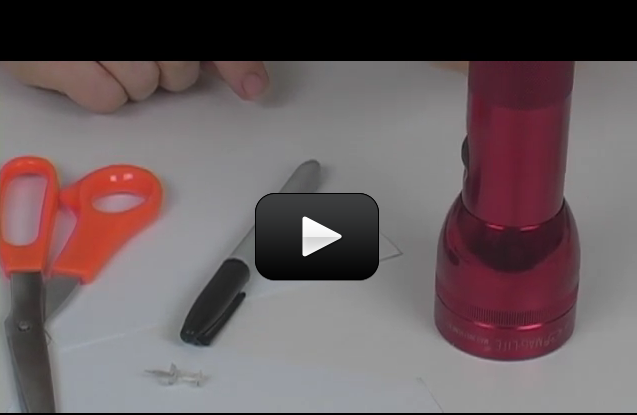It just so happens that the Sun’s diameter is about 400 times larger than the Moon, but the Moon is 400 times closer than the Sun. This makes the Sun and Moon appear to be about the same size in the sky as viewed from Earth. This is also why the eclipse thing is such a big deal for our planet.
You’re about to make your own eclipses as you learn about syzygy. A total eclipse happens about once every year when the Moon blocks the Sun’s light. Lunar eclipses occur when the Sun, Moon, and Earth are lined up in a straight line with the Earth in the. Lunar eclipses last hours, whereas solar eclipses last only minutes.
Materials
- 2 index cards
- Flashlight or Sunlight
- Tack or needle
- Black paper
- Scissors


thats relly cool
Make sure you’re logged in first, and then you should be able to view the PDF file.
Hi. Your link to download the worksheets and exercises isn’t working.
Hi! These demo experiments are interesting, but we aren’t sure where to find the answers to the questions without looking at the answer sheet, which defeats the purpose. Please advise, thanks!
I am not sure where it’s on NASA”s site (there’s sooo much awesome info on it that sometimes it’s really hard to find what you want). Remember, a blue moon is where 2 full moons occur in one month, and since a full moon occurs every 29.5 days, it’s not something that’s common. Here’s a list of upcoming blue moons in the next 12 years for you to put on your calendar: 1/31/2018, 3/31/2018, 10/31/2020, 08/31/2023, 5/31/2026, 12/31/2028.
Does NASA’s eclipse website also tell us when the next blue moon will occur?
Thanks!
-Olivia
The pinhole index card allows you to see a projected image of the sun without the use of a scope or special filters. You may not be able to see a transit with this technique since its so small and bright on a white card. The light from the card passes through the hole and flips, so you see everything opposite. Hope this helps!
We have a few questions:
1. What is the reason for the pinhole index card?
2. How does the pinhole index card effect translate to what we see during an eclipse? We thought we would’ve simply passed the “moon” between the “sun”/flashlight and the “earth”/bottom index card.
3. And why, when we pass the “moon” across the “sun” from left to right, does it appear below the index card to be passing from right to left(opposite direction)?
Thank you! 🙂
No – you are making your own eclipse. 🙂
Do We Need To Have A Eclipse To Do This???
I use NASA’s Eclipse website here:
http://eclipse.gsfc.nasa.gov/eclipse.html
My son is wondering how they can know when the next lunar eclipse is going to occur?